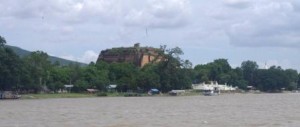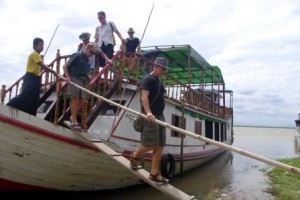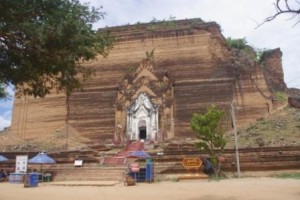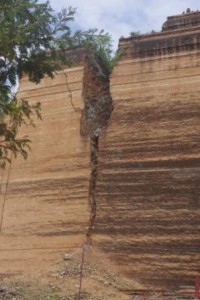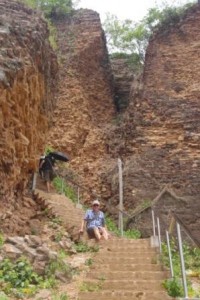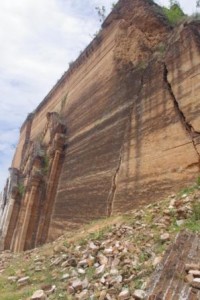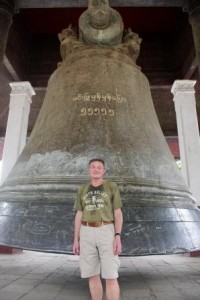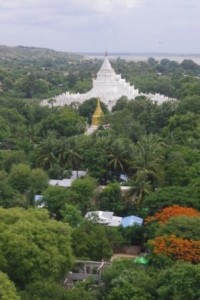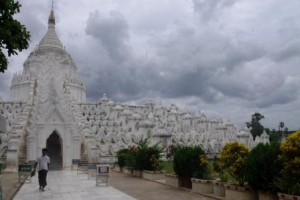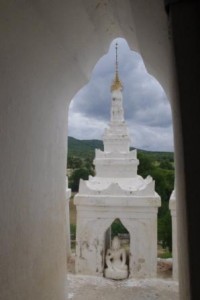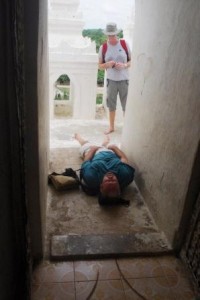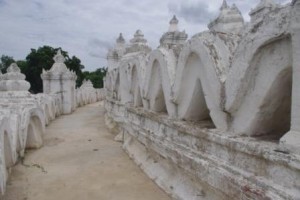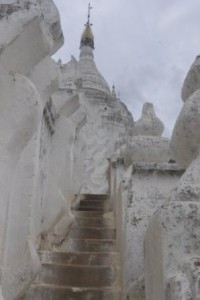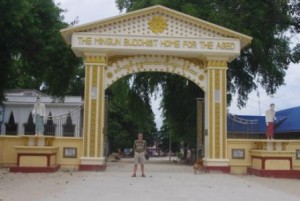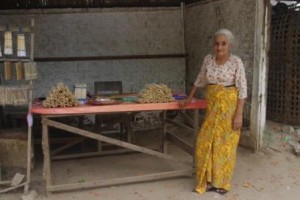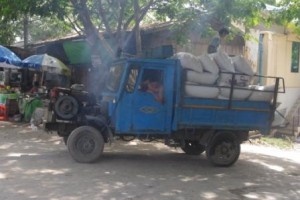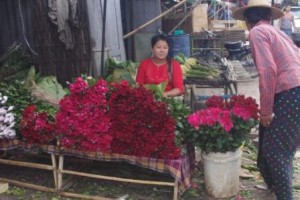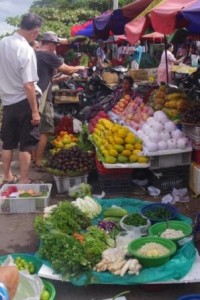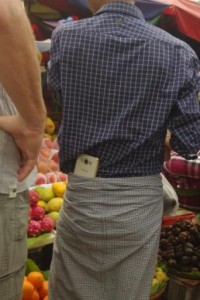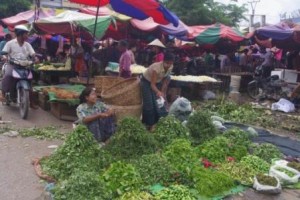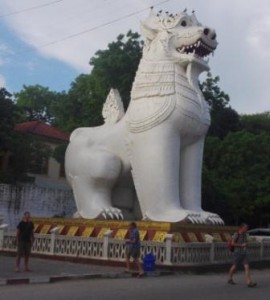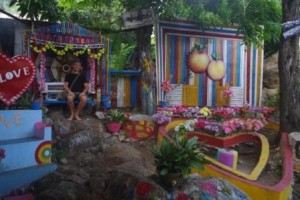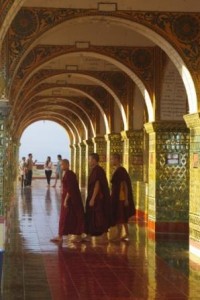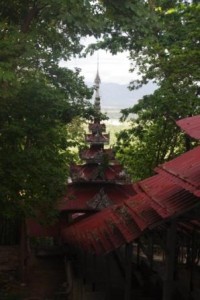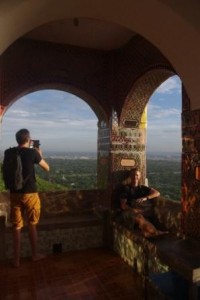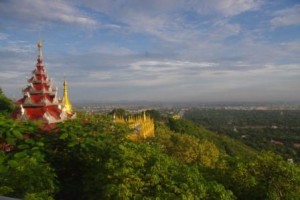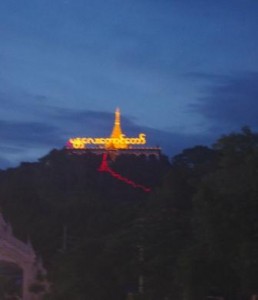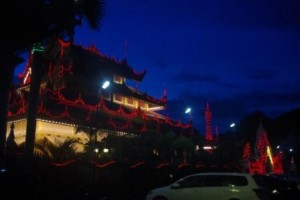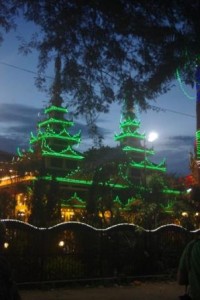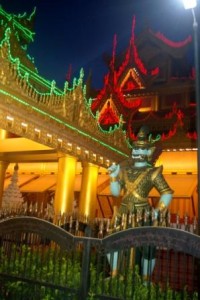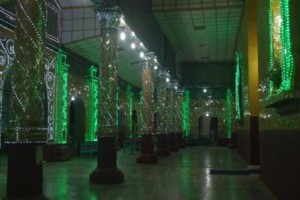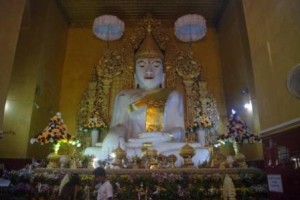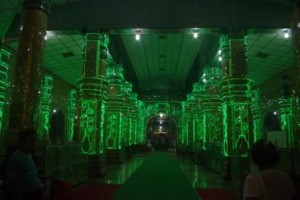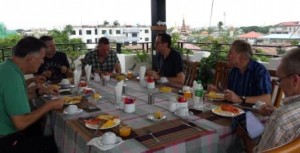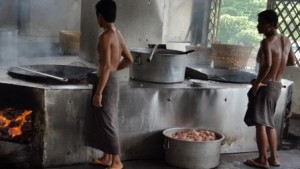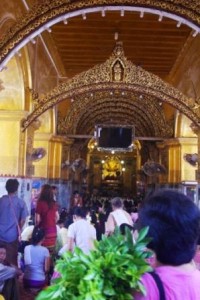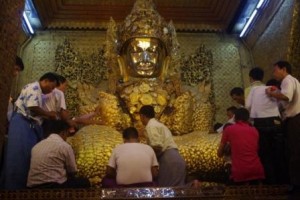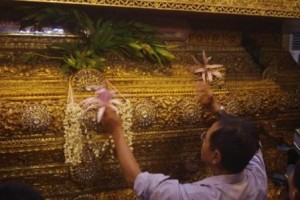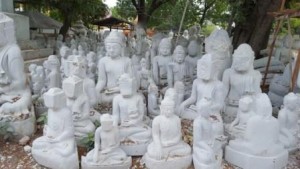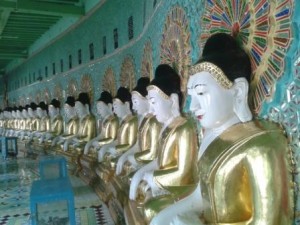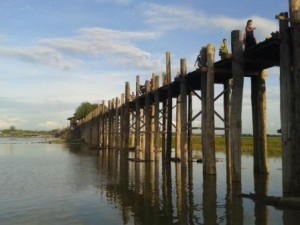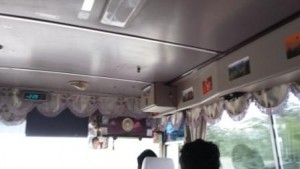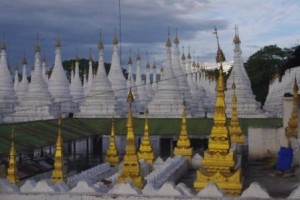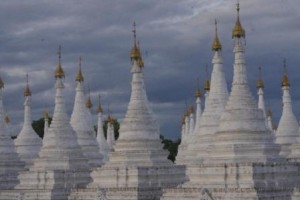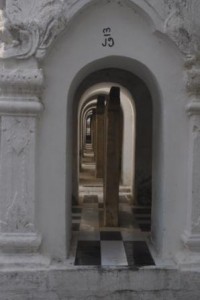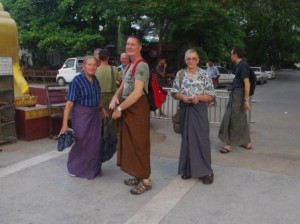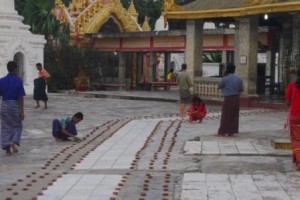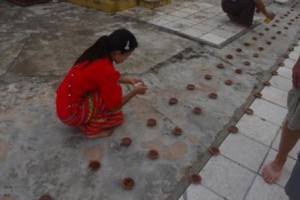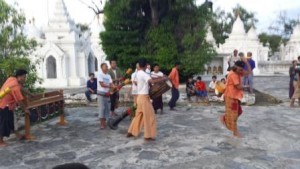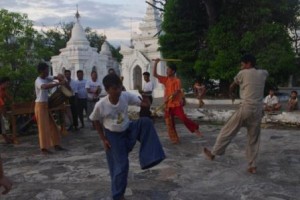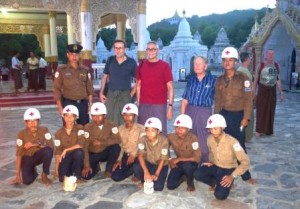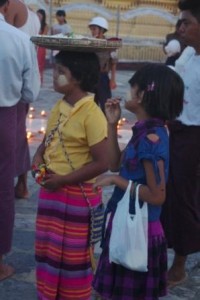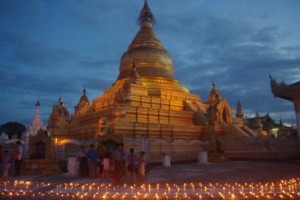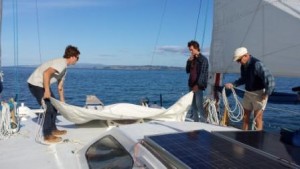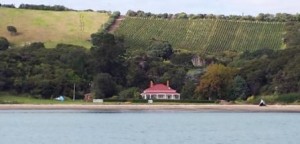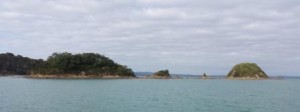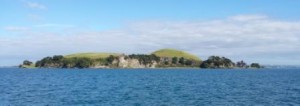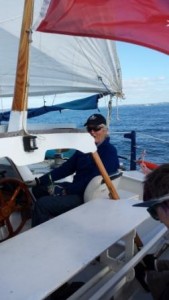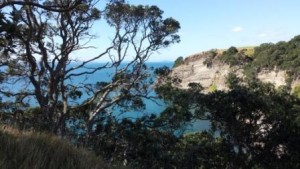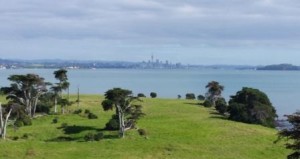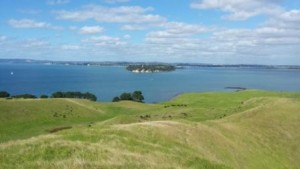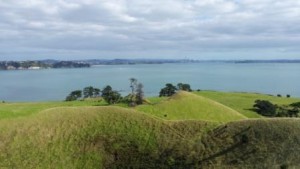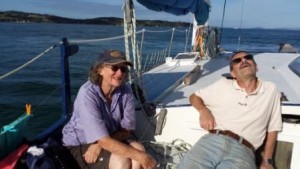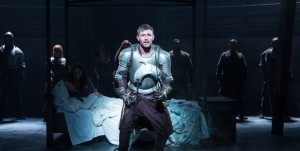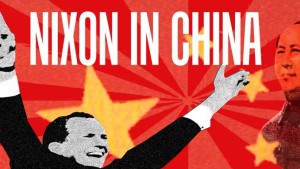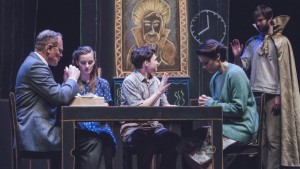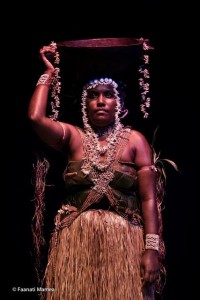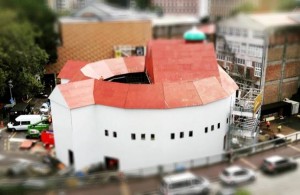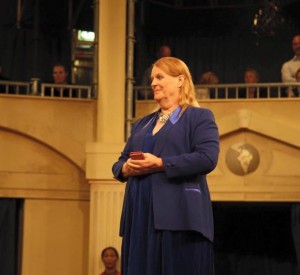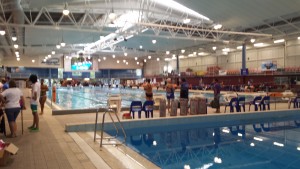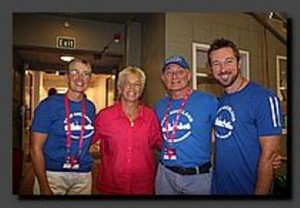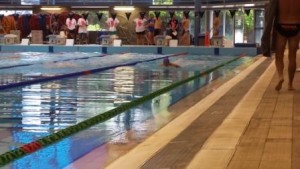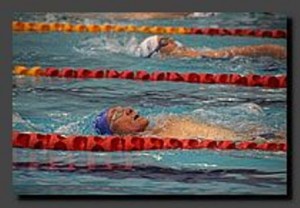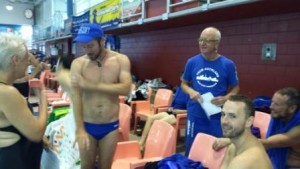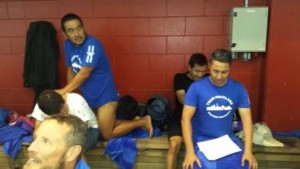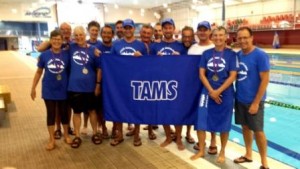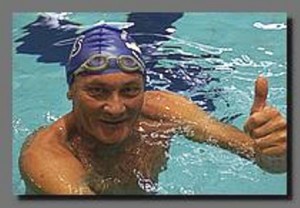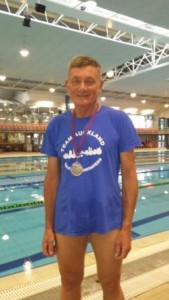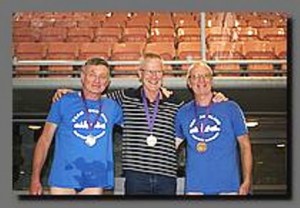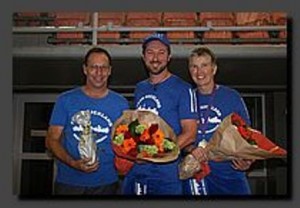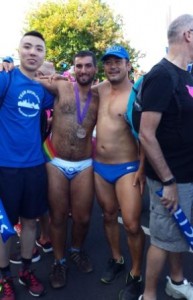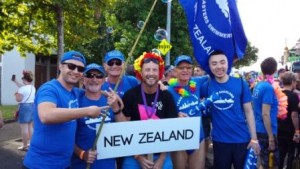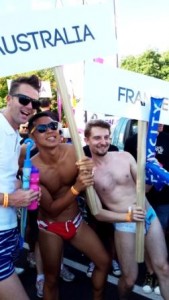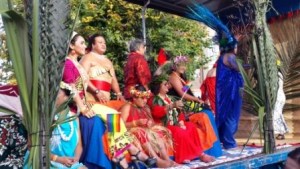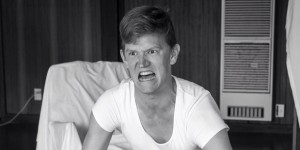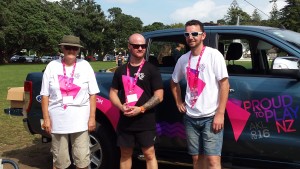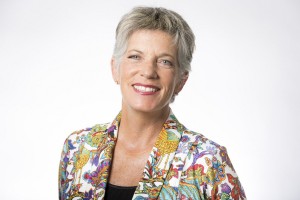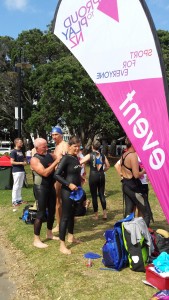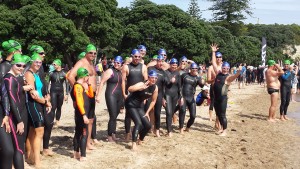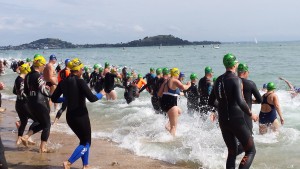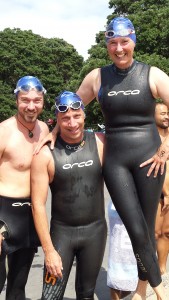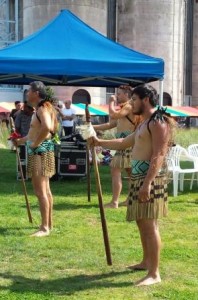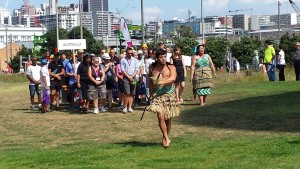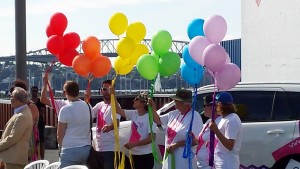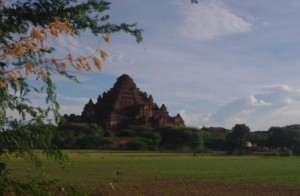
Its an early start as we will travel most of the day. Madalay has been enchanting, but theres a puzzle in that no one can quite remember who wrote the song On the Road to Mandalay. Noel Coward is suggested, but it turns out to be Kiplings Poem, written in faux cockney and set to music by Oley Speaks and sung by many, including Sinatra.
It seems clear to me that Kipling never came to Burma, because his geography is quite wrong. A British solider is dreaming of his Burmese lover.
By the old Moulmein Pagoda lookin lazy at the sea.
Mandalay is about two thirds of the way up the country, miles from the sea. Only the Ayeyerwady here.
But looking closer, Moulmein is on the coastline sweeping south to Thailand. It faces west, and is where the Burma Girl waits for him, or so he believes. So why does he want to go back to Mandalay?
On the road to Mandalay
Where the flying fishes play
I believe that flying fishes are salt water creatures. The muddy Ayeyerwady might not be freshwater, but it aint got any salt in it.

An the dawn come up like thunder oute China crost the Bay
Maynmar shares a border with China to the North, a direction from which Ive never known the sun to rise, though with a bit of imagination you might see the Bay in one of the bends in the Ayeyerwady.
The landscape from Mandalay to Bagan is unremarkable. We travel south through poor undeveloped farmland. Fields seem to be fallow or being tilled, ready for planting in the age old method with a cow pulling a wooden plough. I spot one rotary cultivator suggesting some progress is being made.

The Bagan area is flat and packed full of temples from an era of the Bagan Kings roughly spanning the 11th 13th Centuries. It has now sadly lost its UNESCO world heritage site status due to unacceptable restoration, modern sized bricks, rough pointing and the use of concrete to fill gaps. In addition a tourist hotel has been built by the river in old Bagan within the heritage site area. Some years ago the Government forcibly moved all the people from Old Bagan to clear the area for tourism. New Bagan, several kilometres south seems to now be a thriving area for the lacquer ware industry. Its hot here, so were desperate to jump into the fifteen metre swimming pool at the Amazing Bagan Resort.

Im also keen to do some training as this is the only swimming pool on the tour. The water is hot, around 26-28 degrees so I have to stop every four lengths to cool down and only last twenty minutes. We gather in the evening to visit the first of many temples Pya Tha Da. We climb up the steep steps using hands on steps above for balance as there is no handrail. Theres a great sunset view and a group of young monks are colourful in their saffron robes.

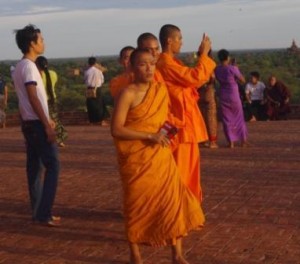
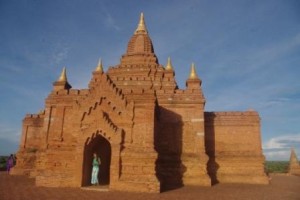
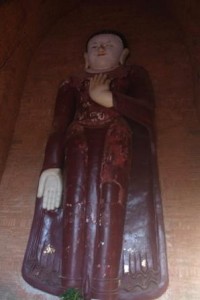
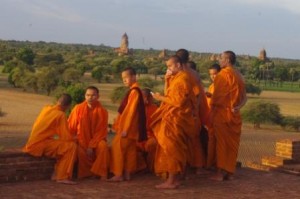

We have a full second day here with temple visits best described with pictures.
Gubyaukgyi
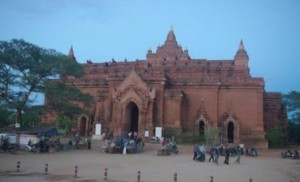
Htilominlo
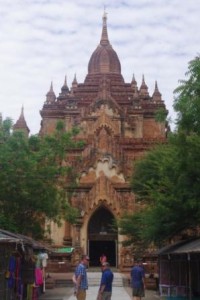
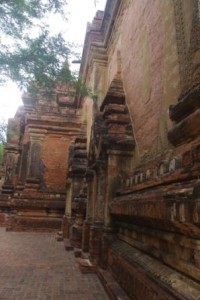
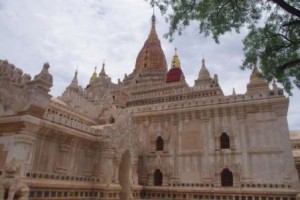
This beautiful temple, Ananda, was inspired by the Himalayas. The architect has created white mountains of great beauty with corners guarded by marble lions which on close inspection have been awarded two penises each. Presumably this means extra potency. The king had the architect killed on completion so he couldnt build anything more beautiful for someone else as they did in those days.

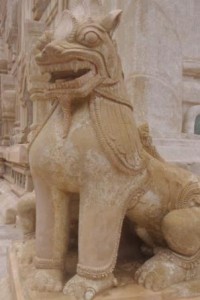
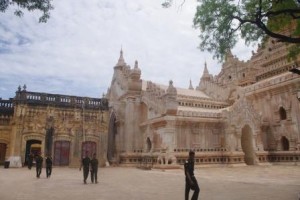
We are being followed by around six army trucks carrying soldiers. They turn out to be 18 year old recruits having a day off. they all look around 16 and we immediately remember not to photograph any of the military in Myanmar. This is the first time we have seen any sign of them – they are more prominent in Yangon.
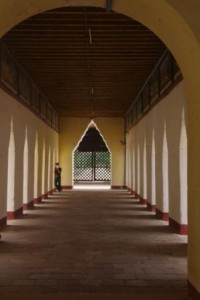
Word gets around that it’s OK to photograph these young men as they are not real soldiers yet. As they are all bare-footed in preparation for entering the temples, even in their smart green uniforms they don’t quite look like soldiers. Joining the military is of course an alternative way of gaining an education – of sorts – similar to, but different from a monastery.
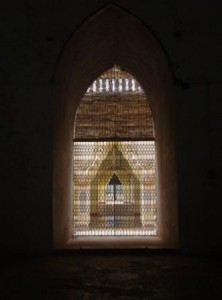
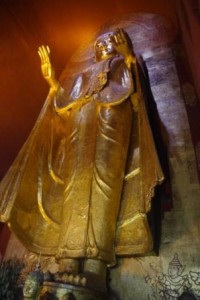
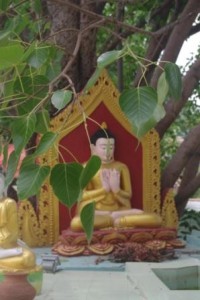
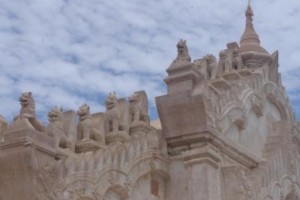

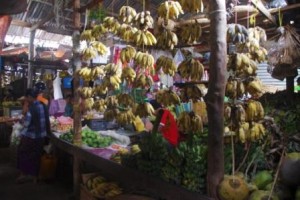
We stop at a local market selling fruit, vegetables, betel nuts & leaves which many of the men here chew. All of our crew indulge and in consequence have red stained teeth. A very short woman which I initially mistake for a child follows me around touching my elbow for attention and indicating that she is hungry. My first thought is to buy her a mango as she looks so woeful.
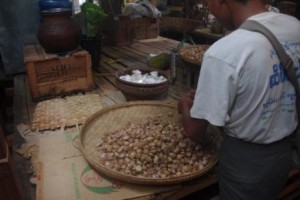
She has pushed some paper up one nostril to look like snot and I note that her bare feet are deformed. I escape to bargain for a dark blue Longyi, and the beggar chases the others. The hawker women here start by giving a gift of a cake of traditional sunblock made from the pith of a particular tree ( you can buy cut up branches in the market). We are then exhorted to buy whatever they are selling and if anyone is strong enough to resist, the gift is snatched back with a cross snort.
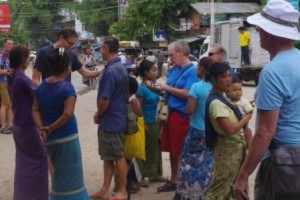
Waiting for the bus to collect us, we are deluged by the hawkers even though we have learned how to say no thank you in Mayanmar Mo way boo Jezu bar. The beggar woman is still around and Richard C works out that they guys have given her the equivalent of a weeks work and proceeds to give us a few tips to avoid being targeted. 1 don’t look at the merchandise. 2 Don’t engage in conversation with the seller. 3. Don’t ask the price unless you want to buy. 4 Don’t name a price at the start and only agree when you get to a price you want to pay. 5. Don’t change your mind after agreeing,
We go to a village to the north of this area to find a café sort of named after a pub chain. Nine of us pile into this open air eatery cooled by fans and sporting a white-board graffiti wall with comments from all over the world. Richard C goes off to arrange massages for some of us (included in the tour package). The owner of the café is intrigued and asks where the women are. Hes guessed and were not shy in ‘coming out’. Its all fine and he admits that the place is Gay Friendly, but please would we not put anything on facebook as homosexuality is still quite frowned upon by some people.
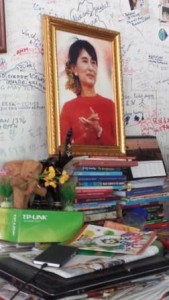
Things are changing in the country, as evidenced by the bright newly framed portrait of Aung San Suu Kyi, but there is a way to go. Though this country is making great progress its being done with lots of small steps, so Im not telling you the name of the café, but if you are gong to Bagan and want to visit, Ill tell you privately. If you are reading the Lonely Planet or Rough Guide, youll find it.
The massage place is a long communal room with firm mattresses on the floor. Four of us plus Richard have opted for this experience. Burmese massage is quite distinctive and is done through the clothes or a towel if there is any bare skin. It relies on pressure on the muscles and the masseurs (3) and masseuses (2) use elbows, hands, knees and feet to kneed the body. Limbs are manipulated and it helps to be flexible as you can find your spine being stretched out by pushing legs over in one direction whilst holding the opposite shoulder in place. The Masseurs all work methodically and seem to all be at the same stage, keeping together. Being a bit of a connoisseur of massage, I find its good, and much needed after all the tramping around temples and getting in and out of the bus.
So its an afternoon of more temples. I undertook this tour with the expectation of being templed out quite soon. I have never been in a country where Buddhism is so strong and just when you think youve seen every temple you could imagine theres yet another one, quite unique.
Sulamani
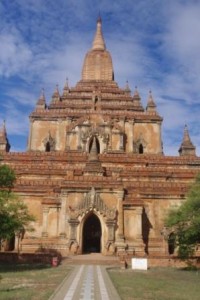

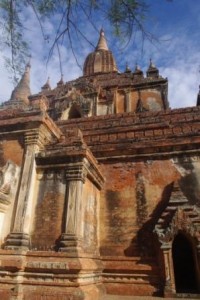
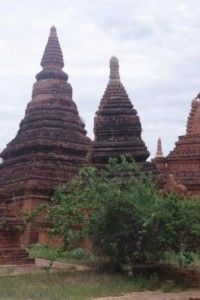
A group of stupas nick-named Pisa have tilted – perhaps an earthquake or poor foundations. Nearby a family live in impoverished conditions selling souvenirs at this little frequented sits. A young man puts out his wares in hope.
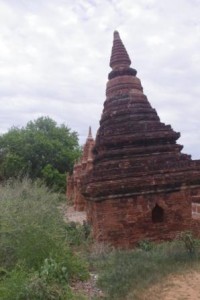
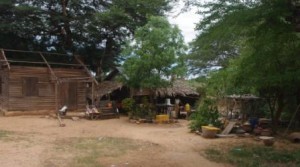
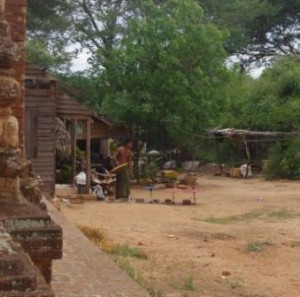
Dhammayangyi
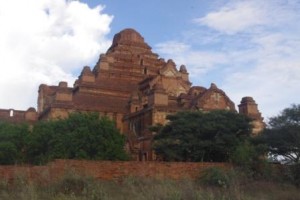
Our sunset today is from the river. Richard hires a boat powered by a propeller on a long extension to take us up-stream.
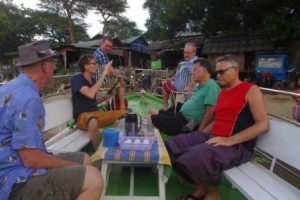
Weve stocked up with beer wine is expensive here and usually not very good.
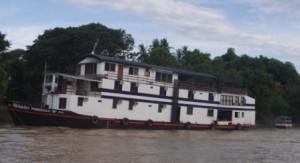
We pass what look like decommissioned river cruise boats now acting as accommodation for workers. There are a few other boats around with couples on a romantic evening out and when we all get far enough upstream, the noisy engines are cut and we drift silently downstream as the sun falls firstly behind a low cloud and then behind the distant hills.

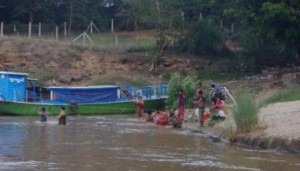

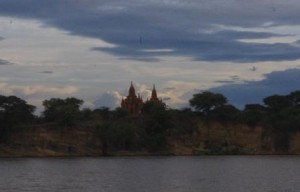
The light on pagodas back-grounded by threatening monsoon clouds is fantastic. So far, in what is supposed to be the beginning of the monsoon season, weve been lucky.
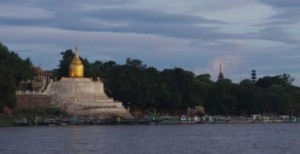
The bus takes us to an Indian Restaurant. The tables are outside with mood candle light. Its great for a young couple but its a bit dim for most of us older chaps to see the menu, so being resourceful we turn on our phone torches. Someone has come prepared with a real torch.
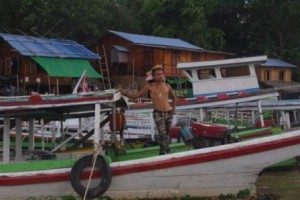
The Kitchen struggles to deliver for ten guests at once and the main dish arrives before the rice. Some of our party forget what they ordered so waiters are standing with an unclaimed dish. Garry and Mark have ordered extra garlic Nan bread while poor Nev, who ordered a salad (no cooking needed) is served last. Worst of all his Nan bread has got forgotten in the deluge of garlic Nans further up the table. Nev is stoic and indulges us in our bread jokes. Even though some of us have taken to wearing longyis to dinner, the mosquitoes are out and some have forgotten to put on repellent. They dont buzz, are smaller than Waiheke Mosquitoes and the bites dont seem to swell up much. Just as well most of us are taking anti-malarial tablets.
